#arthur c. clarke
Text
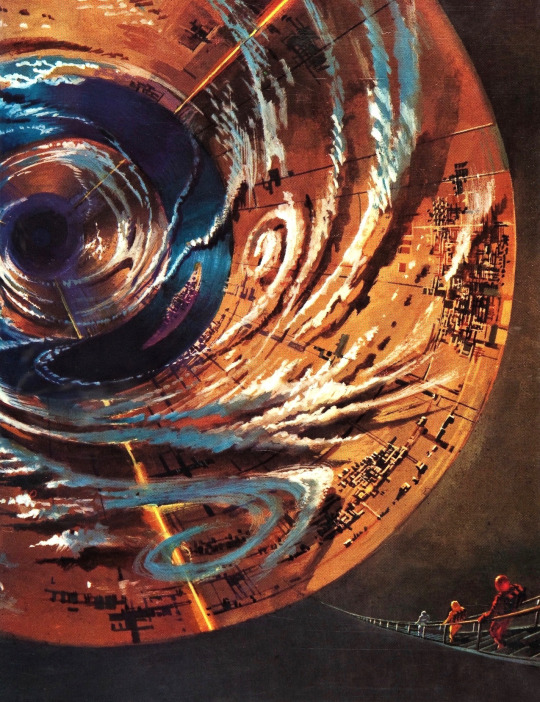
Bruce Pennington's cover art for Rendezvous with Rama by Arthur C. Clarke, 1973.
629 notes
·
View notes
Photo
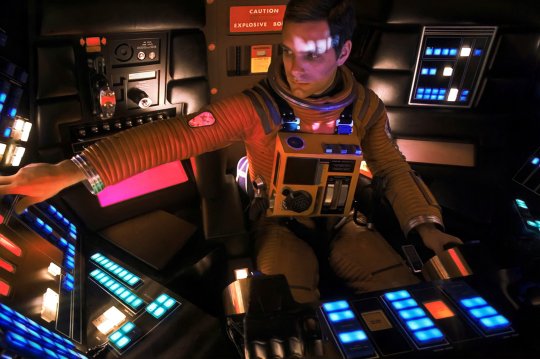
2001: A Space Odyssey (1968)
#1968#film#movie#science fiction#2001: A Space Odyssey#2001#A Space Odyssey#Stanley Kubrick#Keir Dullea#Dr. Dave Bowman#Gary Lockwood#Dr. Frank Poole#EVA Pod#HAL 9000#Monolith#Arthur C. Clarke
779 notes
·
View notes
Text
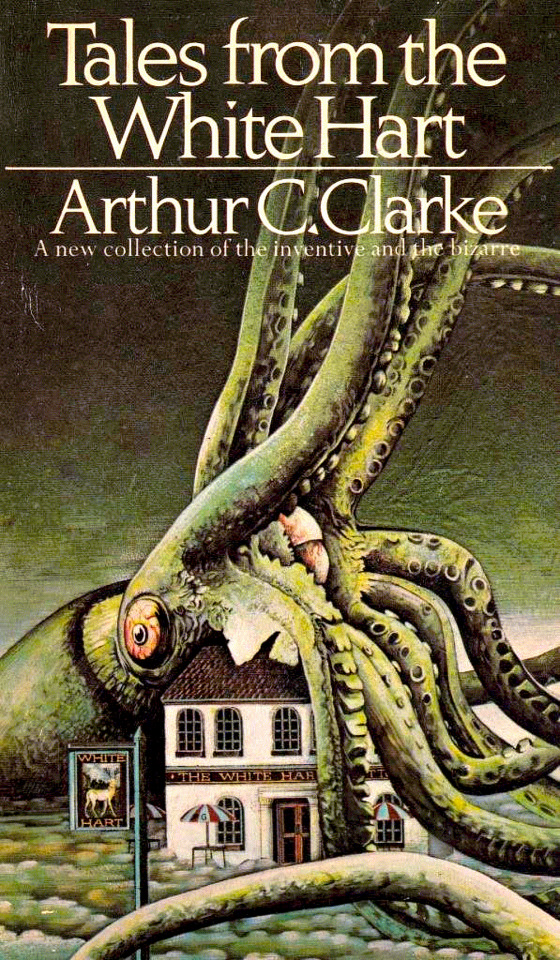
Peter Goodfellow, Tales From The White Hart, Arthur C. Clarke, 1972
57 notes
·
View notes
Text
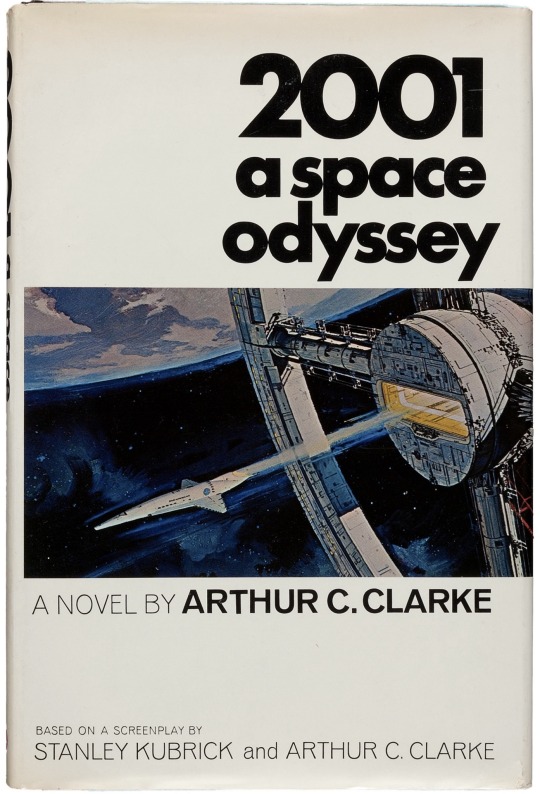
87 notes
·
View notes
Text
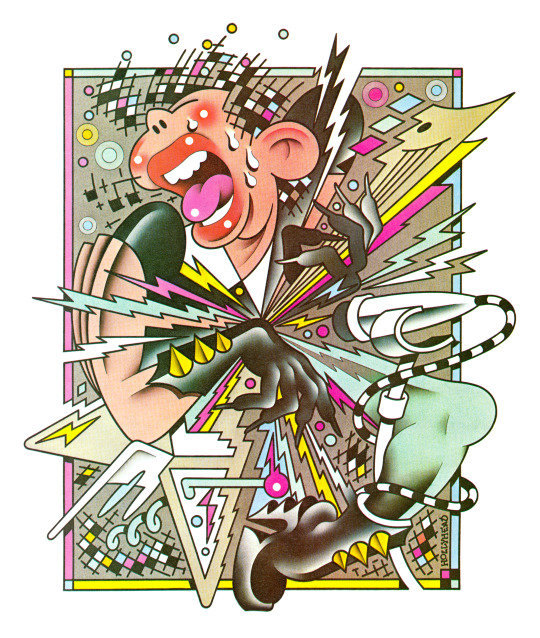
Bush Hollyhead (1949-2020), ''The English Difference'' by Paul Jennings, 1974
I think Hollyhead is probably most famous for the quick cover-up he did for the Hipgnosis cover for Led Zeppelin’s album 'Houses of the Holy' in 1973. The logotype that Hollyhead dashed off to cover up part of Hipgnosis' artwork became synonymous with Led Zeppelin. (I'm not a big Led Zeppelin fan so I didn't know until making this post that the cover of 'Houses of the Holy' was inspired by Arthur C. Clarke’s novel 'Childhood’s End', an idea from the mind of the designer Aubrey Powell and that the kids in that album cover are climbing Giant’s Causeway in Ireland. Or that it's just two kids, siblings, who "were photographed over the course of ten days at dawn and at dusk."
Also, another related tidbit, one of Hollyhead's colleagues, George Hardie, who was part of the same artistic studio, did Pink Floyd's 'The Dark Side of the Moon' with Hollyhead adding an airbrush glow to the design.
#Bush Hollyhead#british artists#Paul Jennings#The English Difference#graphic design#1970s art#hipgnosis#arthur c. clarke#pink floyd#led zeppelin
45 notes
·
View notes
Text
In my life I have found two things of priceless worth - learning and loving. Nothing else - not fame, not power, not achievement for its own sake - can possible have the same lasting value. For when your life is over, if you can say ‘I have learned’ and 'I have loved,’ you will also be able to say 'I have been happy’.
— Arthur C. Clarke, Rama II (Random House, November, 1990)
88 notes
·
View notes
Text

Arthur C. Clarke, Profiles of the Future (Pan Books edition, 1973).
74 notes
·
View notes
Text
House of Leaves, 2001, and Daisy Bell (and why its not creepy)
(Fairly minor) Spoilers for House of Leaves by Mark Z. Danielewski and 2001: a Space Odyssey by Stanley Kubrick
About 500 pages into House of Leaves, Will Navidson begins falling. Alone in the twisting labyrinthine corridors of the House, he is alone, out of supplies, by all metrics thoroughly and definitively defeated. The floor suddenly disappears beneath him and he begins to fall. And there it is, vertically stark against the white page, as many lines are in this section, falling just as he is.
“Daisy. Daisy. Daisy. Daisy, Daisy, give me your answer do. I’m half crazy over the love of you. That’s not right.”
Daisy Bell was written in 1892 by composer Frank Dean under the pen name Harry Dacre. A relatively prolific composer at the time, he is thought to have written the song about Daisy Greville, the Countess of Warwick at the time, although evidence for this factoid is sketch at best, and the lyrics directly contradict this reading.
Daisy Bell is a very simple romance song that tells a very endearing story of a young couple’s romance, being unable to afford much more than the eponymous “bicycle built for two.” There’s also an often ignored line about how they will both “despise Policemen and lamps as well.” Even from a modern perspective this song feels really intimate and cute, expressing joy despite poverty, in the policemen line even expressing disgust at cops and urbanization without care for the environment.
Through a variety of circumstances, Daisy Bell, despite this global appeal, has become primarily associated with advances in computing, being the first song to be synthesized by a computer in 1961 on an IBM 7094, and references to this development persist.
The resilience of references to this accomplishment are remarkably popular, primarily due to Arthur C. Clarke and Stanley Kubrick’s 2001: a Space Odyssey in which the computer HAL 9000 sings the opening lines of the song as he is deactivated, calling back to the IBM demo, which Clarke himself had witnessed.
This rendition, and the original synthesized rendition are often described as creepy and off putting, but I find them strangely endearing. The original version represents a massive leap in computing, its few seconds of audio, and is extremely imperfect. The choice of Daisy Bell, and simple live song from a hundred years ago also helps to humanize the voice singing it.
HAL 9000’s rendition is pained, sung as he looses his memory and cognitive functions in what feels like an eternity, in both novel and film. HAL 9000 is a painfully sympathetic character for me. While in the film his intentions remain fairly ambiguous, in the novel they come from a conflict in his instructions, and how he chooses to navigate around those instructions, interpreting them extremely literally being a computer.
It is clear that the intention with the character was to present an uncanny valley human-like consciousness, but honestly a lot of the time it just reads like he’s on the spectrum. He speaks extremely deliberately with awkward pacing. He reflects, in many ways my own anxieties about being excluded, as-well as a very human survival instinct. He is a bad liar, and extremely trepidatious about the task he believes he has to do. He reads in many ways as I would expect a human to in a position of such intense responsibility.
Thus HAL 9000’s final song to me Isn’t creepy, its confirmation of just how human he is. It is, distinctly, something he asks to sing, he almost reads as excited to show it off. It is fitting that the last song he sings is the first song a computer ever sung. I care way more about HAL than I do any of the other characters in the movie, despite his atrocious actions. In many ways he seems the most human, and I think that was part of the point.
My favorite rendition of the song comes from this popular lineage of synthesized version. Tamachang’s Daisy Bell from Future Music With Future VOICES is hauntingly beautiful. Composed of three synthesized voices, that of IBM 7094, Vocoder, and Vocaloid 4 Cyber Diva, as a fusion of old and new, it’s genuinely a really beautiful piece. Each voice has its own unique qualities, all of which lend the song distinctly different emotion.
The narrative I like to imagine is one i have seen dozens of comments on the song mentioning, and stems from the fact that Cyber Diva sounds far more youthful than the other two. In this framing, it is a newer computer saying goodbye to her old relatives as they die, via singing an extremely human cheesy love-song with them.
All of these narratives around computers and Daisy Bell are a byproduct of our tendency to over-anthropomorphize computers.
House of Leaves, on the other hand, seeks to draw on themes completely unrelated to the long lineage of robotic Daisy Bells. My first thought when I saw the line in the novel, was of Navidson’s daughter, Daisy. I could see this having been a lullaby, sung to her as he put her to bed. I do not believe this reading to be the most compelling, however. The novel does not spend much time on Navidson’s children.
An often cited fact about the novel, and the Navidson record in particular is that its actually primarily a love story. I believe this to be a far more compelling understanding of the song’s conclusion. Will and Karen Navidson have been through hell together, and this song, sung when things seem darkest, as Navidson falls, as we latter understand, towards his wife, is the subtle confirmation, that despite everything they’ve been through, they will be ok.
House of Leaves, in general, is about, on some level, love (not just romantic) in the face of adversity, both through the lens of the Navidsons troubled reparation of their relationship, as well as Johnny’s slow collapse and our eventual understanding of his past. Daisy Bell is a perfect expression of the realization of these themes. That love can persist even when circumstances seem dire, and can in fact help you through those circumstances. A relatively simple message, but with many complexities
Thank you for entertaining my over-analysis :)
Fav Daisy Bell:
youtube
Original synthesized Daisy Bell:
youtube
Daisy Bell Hall 9000:
youtube
#house of leaves#2001 a space odyssey#literary analysis#book recommendations#daisy bell#vocaloid#ibm#ibm 7094#Hal 9000#will navidson#karen navidson#stanley kubrick#arthur c. clarke#mark z danielewski#cyber diva#vocaloid 4#vocoder#Youtube
25 notes
·
View notes
Text
No utopia can ever give satisfaction to everyone, all the time. As their material conditions improve, men raise their sights and become discontented with power and possessions that once would have seemed beyond their wildest dreams. And even when the external world has granted all it can, there still remain the searchings of the mind and the longings of the heart.
-Arthur C. Clarke, Childhood's End
46 notes
·
View notes
Text
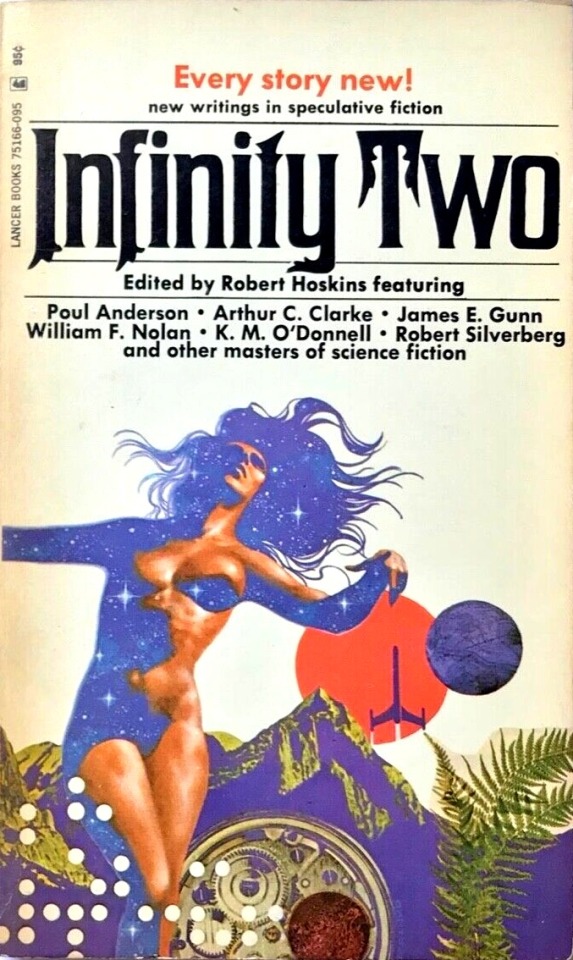
Robert Hoskins (editor) - Infinity Two - Lancer - 1971 (cover art by Jim Steranko)
#witches#infinities#occult#vintage#infinity two#lancer books#robert hoskins#science fiction#speculative fiction#various authors#jim steranko#poul anderson#arthur c. clarke#1971
27 notes
·
View notes
Text

Arthur C. Clarke (British, 1917-2008)
32 notes
·
View notes
Text
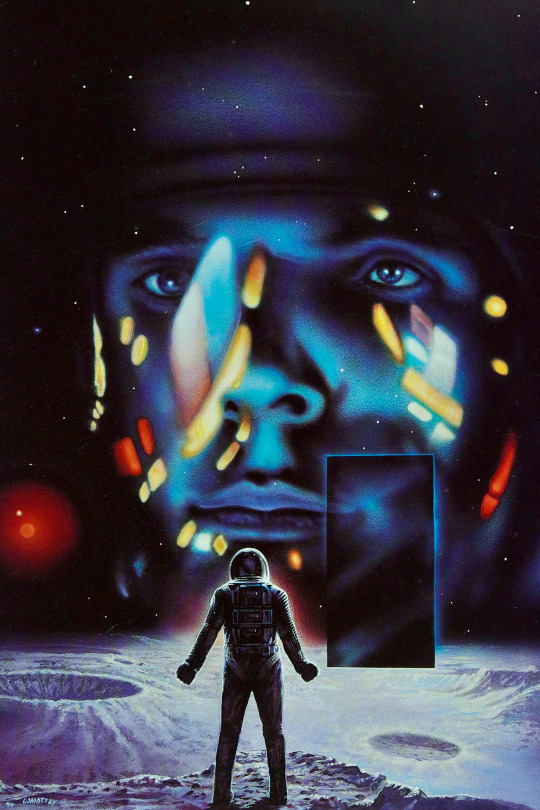
Ron Walotsky, 1994.
157 notes
·
View notes
Photo


2001: A Space Odyssey (1968)
#1968#film#movie#science fiction#2001: A Space Odyssey#2001#A Space Odyssey#Stanley Kubrick#Keir Dullea#Dr. Dave Bowman#Gary Lockwood#Dr. Frank Poole#HAL 9000#Monolith#Arthur C. Clarke
560 notes
·
View notes
Text
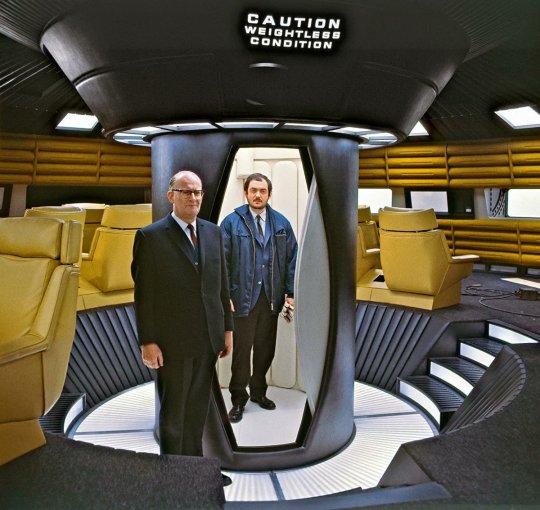
Arthur C. Clarke, Stanley Kubrick, 1968
144 notes
·
View notes
Text

Planets: Earth
How inappropriate to call this planet Earth when it is quite clearly Ocean.
#arthur c. clarke#earth#earth aesthetic#Earth planet#planet earth#earth and sky#earth is beautiful#earth love#Planet#Planets#Space#Astrology#astronomy#Planet aesthetic#Planet moodboard#space aesthetic#space moodboard#astrology aesthetic#astronomy aesthetic#space lovers#space exploration#outer space#spacecore#space core#astrology planets#Astronomy planets#space is cool#moodboard#aesthetic#nature
18 notes
·
View notes
Text
Any sufficiently advanced technology is indistinguishable from magic
Those are words of Arthur C. Clarke, but I do not think he was exactly right.
We now live in a world where every one of us has a personal device that allows them to communicate with the whole world, if they wish so, read and research any piece of information, watch from endless well of content. And yet how many of us can actually explain how exactly does it work? If it gets broken, how many of us can open and fix it?
We're now slowly coming to terms with the fact that Gen Z and Gen Alpha, which everyone assumed will be more tech-savvy than Millenials, are technology illiterate, having to learn from the basics any UI that isn't the touchscreen tiles.
Both of those are by design, as the corporations do not want us to be able to repair or tinker with their product, just buy a new one whenever something goes wrong. The way young people have been taught to operate a smartphone and an ipad was purposefully designed to discourage learning past the basics, or they'll "mess around" in the programming or see past the marketing guy's bullshit when he is selling them new one. Hell, so much of grift of NFTs crypto and AI relies on people not understanding how it actually works. This is why AI bros love the "you say AI is bad but can you explain what it actually does?" defense, trying to lord over how smart they are over "the masses", rely on ignorance to push through the scam.
In one of the Witcher stories, I forgot which one, Geralt mocking asks a wizard to explain the difference between menstrual blood of a teenage virgin struck by lightning in an open field of dandelions under clear sky at midnight of the winter solstice, and blood of old peasant matron that drunkinly stumbled and fell off a cliff last thuesday, and what makes the former necessary for magic rituals in the way the latter cannot substitute for. The wizard, smugly, admits he's actually using pig's blood. But if any peasant would know that would suffice, they would be doing magic themselves, instead of paying him. And if too many people would be doing magic, the profession would be far less prestigious. And far less profitable.
Clarke was, fundamentally wrong. It's not advancement that makes technology indistinguishible from magic, at least not on it's own. it's how much work wizard from Silicon Valley put into obsctructing its nature and making sure no one but them understands it.
-Admin
#science#science fiction#evils of capitalism#the witcher#arthur c. clarke#computer science#computer engineering
10 notes
·
View notes